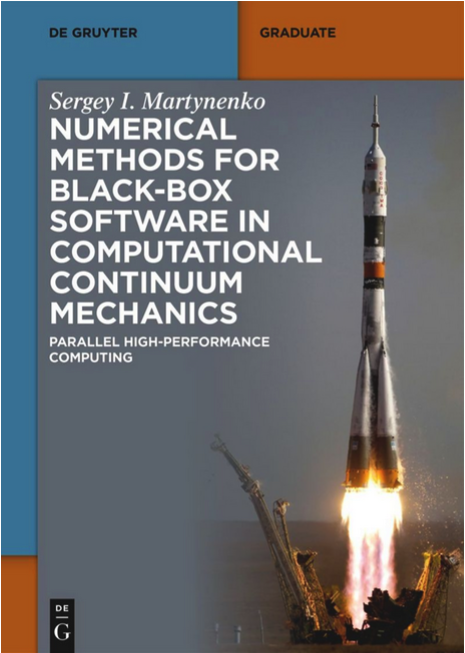Numerical Methods for Black-Box Software in Computational Continuum Mechanics
Breve Descripción
Este capítulo introductorio I representa un análisis teórico de los algoritmos computacionales para una solución numérica de las ecuaciones básicas en mecánica continua. En este capítulo, se examinan los requisitos generales para grillas computacionales, discretización y métodos iterativos para software de caja negra. Finalmente, se presenta el concepto de un algoritmo de dos cuadrículas para la resolución (des)acoplada de problemas multidimensionales no lineales de valores (iniciales) en la frontera en mecánica continua (simulación multifísica) en dominios complejos.
Breve descrição
Este capítulo introdutório I representa uma análise teórica de algoritmos computacionais para uma solução numérica das equações básicas da mecânica do contínuo. Este capítulo examina os requisitos gerais para grades computacionais, discretização e métodos iterativos para software caixa preta. Finalmente, é apresentado o conceito de um algoritmo de duas grades para a solução (des)acoplada de problemas multidimensionais de valores de contorno não lineares (iniciais) em mecânica contínua (simulação multifísica) em domínios complexos.
Full description
The organization of the material is presented as follows:
This introductory chapter I represents a theoretical analysis of the computational algorithms for a numerical solution of the basic equations in continuum mechanics. In this chapter, the general requirements for computational grids, discretization, and iterative methods for black-box software are examined. Finally, a concept of a two-grid algorithm for (de-)coupled solving multidimensional non-linear (initial-)boundary value problems in continuum mechanics (multiphysics simulation) in complex domains is presented.
Chapter II contains descriptions of the sequential Robust Multigrid Technique which is developed as a general-purpose solver in black-box codes. This chapter presents the main components of the Robust Multigrid Technique (RMT) used in the two-grid algorithm (Chapter I) to compute the auxiliary (structured) grid correction. This includes the generation of multigrid structures, computation of index mapping, and integral evaluation. Finite volume discretization on the multigrid structures will be explained by studying a 1D linear model problem. In addition, the algorithmic complexity of RMT and black-box optimization of the problem-dependent components of RMT are analysed.
Chapter III provides a description of parallel RMT. This chapter introduces parallel RMT-based algorithms for solving the boundary value problems and initial-boundary value problems in unified manner. Section 1 presents a comparative analysis of the parallel RMT and the sequential V-cycle. Sections 2 and 3 present a geometric and an algebraic parallelism of RMT, i.e. parallelization of the smoothing iterations on the coarse and the levels. A parallel multigrid cycle will be considered in Section 4. A parallel RMT for the time-dependent problems is given in Section 5. Finally, the basic properties of parallel RMT will be summarized in Section 6.
Theoretical aspects of the used algorithms for solving multidimensional problems are discussed in Chapters IV. This chapter contains the theoretical aspects of the algorithms used for the numerical solving of the resulting system of linear algebraic equations obtained from discrete multidimensional (initial-)boundary value problems.
Formal Science
otras áreas de / interés...
other areas of / interest...
outras áreas de interesse...
¿Buscas un título en un área específica?
Looking for books in a specific area?
¿Procurando livros em uma área específica?














